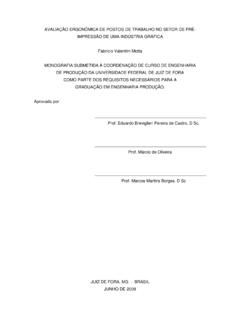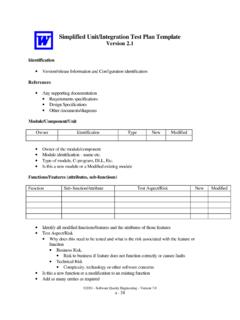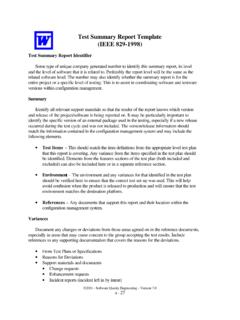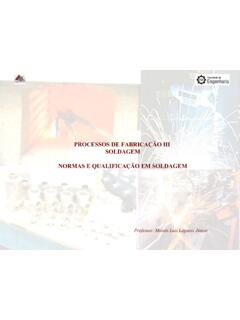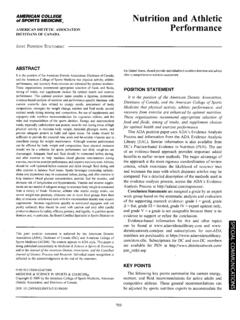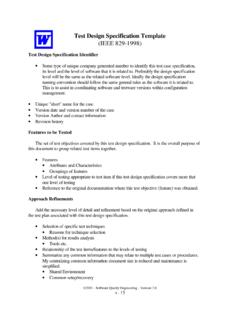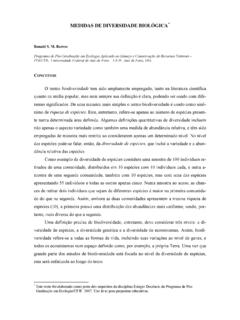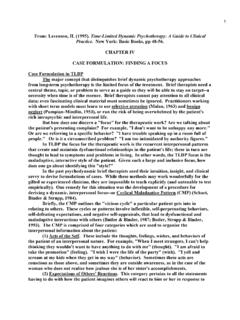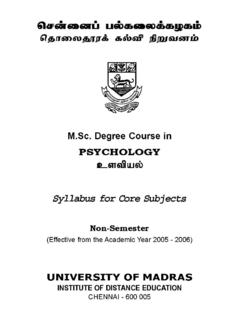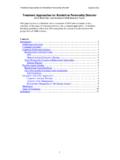Transcription of Editorial Body image: past, present, and future - UFJF
1 body image 1 (2004) 1 5 EditorialBody image : past , present , and futureThomas F. Cash Department of Psychology, Old Dominion University, Norfolk, Virginia, VA 23529, USAR eceived 21 July 2003 AbstractThis brief Editorial article introduces the new scientific journal, body image :An International Journal of Research, anddescribes its rationale and mission in relation to the history and future of the study of body image and human appearance. 2003 Elsevier All rights : body image ; Physical appearance; EditorialA personal welcomeWith great pleasure, as the founding Editor-in-Chief,I welcome you to the inaugural issue of our newpeer-reviewed, scientific publication body image :An International Journal of Research. This schol-arly vehicle has been my vision for many years,for reasons that I will elucidate in this Editorial in-troduction.
2 The evolution of this journal reflectsan ever-expanding field of scientific inquiry intothe profound as well as subtle meanings of hu-man embodiment. Plato once insightfully remarkedthat we are bound to our bodies like an oyster isto its shell. Indeed, our life experiences are inte-grally influenced by the body we happen to own professional awakening to this field came30 years ago in writing my doctoral dissertation. Itinitiated my decade of research on what I call the out- Tel.:+1-757-683-4439; fax:+ ( Cash).side view of human appearance (Cash, 1990) howdoes what we look like on the outside affect ourlives? I studied the social stereotyping of and behav-ioral reactions to physical appearance (especially mea-sured physical attractiveness ) in a range of contexts,from first impressions, to friendship formation, datingand mating, and employment opportunities.
3 I learnedthat appearance matters, often in complex ways (seeBull & Rumsey, 1988;Cash, 1990; Etcoff, 1999;Jackson, 1992; Patzer, 1985). However, I also learnedthat individuals own subjective experiences of theirappearance were often even more psychosociallypowerful than the objective or social reality of self-perspective I termed the inside view (Cash, 1990), which is body image . body imagerefers to the multifaceted psychological experienceof embodiment, especially but not exclusively one sphysical appearance. As I have written on more thanone occasion, body image is body images (Cash& Pruzinsky, 1990, p. xi). It encompasses one sbody-related self-perceptions and self-attitudes, in-1740-1445/$ see front matter 2003 Elsevier All rights (03)00011-12 Editorial / body image 1 (2004) 1 5cluding thoughts, beliefs, feelings, and behaviors.
4 Thisfascinating phenomenon has attracted my scientificcuriosity and professional devotion for 20 years. Theliterature attests that both basic and applied scientificresearch on body image has grown steadily over thelast half century, with impressive escalation duringrecent decades. For example, searches of PsycINFO sand PubMed s databases for articles pertaining tobody image or body (dis)satisfaction yielded 726 and1250 citations, respectively, from the 1970s, 1428 and1785 citations from the 1980s, and 2477 and 2766citations from the 1990s (Pruzinsky & Cash, 2002).Looking backAs conveyed in the volumeBody image :A Hand-book of Theory,Research,and Clinical Practice(Cash& Pruzinsky, 2002a), the field has a fascinating historyand is evolving in intriguing directions (Pruzinsky &Cash, 2002). Nearly a century ago, a recognition of body image or body schema began with clinicalattempts to understand neuropathological forms ofbody experience, including such phenomena as phan-tom limb, autotopagnosia, hemiasomatognosia, and anosognosia (seeFisher, 1990).
5 During thefirst half of the 20th century,Schilder (1935/1950)emerged as the scholar who almost single-handedlyupgraded the study of body experience, taking it be-yond a parochial focus on the distorted perceptionsinduced by brain damage (Fisher, 1990, p. 7). Sub-sequently, eminent psychologist Seymour Fisher de-voted much of his career to studying body image froma psychoanalytic perspective, prolifically publishingbooks and scientific papers on the body boundary construct (Fisher, 1970, 1986;Fisher & Cleveland,1968). Concurrently, FranklinShontz (1969), whowas critical of the psychodynamic viewpoint, soughtto integrate theory and data from various areas of ex-perimental psychology, regarded body experience asmulti-dimensional, and applied scientific findings tounderstand and help persons with physical disabilities(Shontz, 1990).
6 Considering the presentIn recent years, clinical psychology and psychiatryhave dominated the study of body image , particularlyinvestigations and applications pertaining to eatingdisorders among young women. These professionalpursuits have produced profound and useful knowl-edge (seeCash & Pruzinsky, 2002a;Thompson, 1996,2004;Thompson, Heinberg, Altabe, & Tantleff-Dunn,1998;Thompson & Smolak, 2001). Indeed, this popu-lar area of research has served as an important catalystfor body image research in other areas. However, ithas also reinforced the limiting notion that body im-age is only relevant to girls and women, and only con-cerns body weight and shape. I firmly believe that thefield must build upon yet transcend this narrow focusand capture the rich diversity of human experiencesof embodiment. Substantial, exciting work is happen-ing in other areas of psychology, in other social andbehavioral sciences, and in numerous medical and al-lied health fields (seeCash & Pruzinsky, 2002a).
7 Forexample, acquired physical diseases or injuries ( ,cancers, HIV/AIDS, skin diseases, or burns) and theirtreatments can dramatically change the functioningand appearance of the body , which in turn can alterthe person s body image and psychosocial well-being,for better or worse, in everyday life. Experiences andconditions of embodiment have far-reaching effectson human development and the quality of transcendence of the concept of body im-age beyond its most common applications intoever-widening contexts of human experience is thecentral vision of our new journal. Its mission is toexpand and integrate body image erudition in waysthat advance science and its application. For years,many colleagues and I have been thwarted by the factthat no single publication outlet exists for the rapidlygrowing scholarship on body image and human ap-pearance.
8 The research is ultimately found in scores ofjournals across a range of disciplines, specialties, andnationalities. In the evaluation of my proposal for thisjournal, our publisher Elsevier conducted databasesearches and discovered that publications were widelydispersed. Only one journal published more than 5%of extant articles over a recent period and dozens ofjournals each published an occasional few , the dissemination and integration of knowledgeregarding body image is diffuse and homeless. Thetime is ripe for an interdisciplinary and internationalprofessional journal that publishes ideas and evidenceabout the psychosocial significance of embodied hu-man experience. I believe that our building a homeEditorial / body image 1 (2004) 1 53for this field will serve the synergy of creating andcommunicating knowledge and its helpful forwardIn the concluding chapter of our editedBody Im-age Handbook,we(Cash & Pruzinsky, 2002b) delin-eated and discussed the themes and future directionsconveyed by the contributing authors of the preced-ing 56 chapters.
9 Although I will not attempt to reiter-ate our many observations here, these directive themesare represented in the journal s Aims and Scope. body Imagewelcomes the submission of original re-search articles, brief research articles, theoretical andreview papers, and science-based practitioner reportson the following topics (listed in no particular order ofpriority): The effects of specific physical characteristics ( , body size, attractiveness, physical disfigurementsor other appearance-altering conditions) on bodyimage, psychological functioning, interpersonalprocesses, and quality of life. Physical appearance and body image in diverse cul-tural contexts ( , cross-cultural or ethnic studies),including the culture of gender. Physical appearance and body image in thefull range of medical and allied health contexts( , cosmetic and reconstructive surgery, dentalmedicine, dermatology, endocrinology, neurology,nursing, obstetrics and gynecology, physical ther-apy, rehabilitation medicine, urology, etc.)
10 Validation of new and existing assessments of spe-cific aspects of the multidimensional body imageconstruct ( , body image trait assessments,contextual measures, assessments pertinent to spe-cific physical or psychological conditions, cultur-ally sensitive measures, etc.). Factors that influence positive and negative bodyimage development across the life span ( , riskfactors and protective factors). Adaptive and maladaptive body image processesand their clinically relevant consequences on psy-chosocial functioning and quality of life ( , positive body image and body image psy-chopathology in relation to eating disorders, bodydysmorphic disorder, social phobia, mood disor-ders, etc.). The relationship of body image to behavioral vari-ables ( , exercise and other physical activity,eating and weight-control behaviors, grooming andappearance-modifying behaviors, social behaviors,etc.)
